
Edisto Island is one of South Carolina's Sea Islands, the larger part of which lies in Charleston County, with its southern tip in Colleton County. Edisto Beach is in Colleton County, and the Charleston County part of the island is unincorporated.

Johns Island is an island in Charleston County, South Carolina, United States, and is the largest island in the state of South Carolina. Johns Island is bordered by the Wadmalaw, Seabrook, Kiawah, Edisto, Folly, and James islands; the Stono and Kiawah rivers separate Johns Island from its border islands. It is the fourth-largest island on the US east coast, surpassed only by Long Island, Mount Desert Island and Martha's Vineyard. Johns Island is 84 square miles (220 km2) in area, with a population of 21,500.

McLeod Plantation is a former slave plantation located on James Island, South Carolina, near the intersection of Folly and Maybank roads at Wappoo Creek, which flows into the Ashley River. The plantation is considered an important Gullah heritage site, preserved in recognition of its cultural and historical significance to African-American and European-American cultures.

The large, neoclassical Simmons-Edwards House is a Charleston single house built for Francis Simmons, a Johns Island planter, about 1800. The house, located at 14 Legare St., Charleston, South Carolina, is famous for its large brick gates with decorative wrought iron. The gates, which were installed by George Edwards and which bear his initials, include finials that were carved to resemble Italian pinecones. They are frequently referred to as pineapples by locals, and the house is known popularly as the Pineapple Gates House.
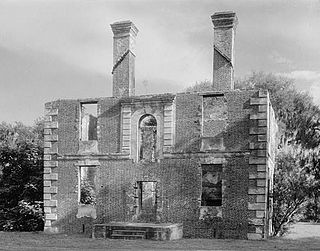
The Paul Hamilton House, commonly referred to as the Brick House Ruins, is the ruin of a 1725 plantation house on Edisto Island, South Carolina, that burned in 1929. It was designated a National Historic Landmark in 1970 for the unusual architecture of the surviving walls, which is partly based on French Huguenot architecture of the period.

The economy of South Carolina was ranked the 25th largest in the United States based on gross domestic product in 2022. Tourism, centered around Myrtle Beach, Charleston, and Hilton Head Island, is the state's largest industry. The state's other major economic sector is advanced manufacturing located primarily in the Upstate and the Lowcountry.

The William Seabrook House, also known as the Seabrook is a plantation house built about 1810 on Edisto Island, South Carolina, United States, southwest of Charleston. It is located off Steamboat Landing Road Extension close to Steamboat Creek about 0.7 mi (1.1 km) from Steam Boat Landing. It was named to the National Register of Historic Places on May 6, 1971.

The history of Charleston, South Carolina, is one of the longest and most diverse of any community in the United States, spanning hundreds of years of physical settlement beginning in 1670. Charleston was one of leading cities in the South from the colonial era to the Civil War in the 1860s. The city grew wealthy through the export of rice and, later, sea island cotton and it was the base for many wealthy merchants and landowners. Charleston was the capital of American slavery.

Brookland Plantation is a large plantation along Shingle Creek on Edisto Island, South Carolina.

Botany Bay Heritage Preserve & Wildlife Management Area is a state preserve on Edisto Island, South Carolina. Botany Bay Plantation was formed in the 1930s from the merger of the Colonial-era Sea Cloud Plantation and Bleak Hall Plantation. In 1977, it was bequeathed to the state as a wildlife preserve; it was opened to the public in 2008. The preserve includes a number of registered historic sites, including two listed in the National Register of Historic Places: a set of three surviving 1840s outbuildings from Bleak Hall Plantation, and the prehistoric Fig Island shell rings.

Prospect Hill is an historic plantation house on Edisto Island, South Carolina. The two-story Federal house is significant for its architecture and ties to the production of sea island cotton. Constructed about 1800 for Ephraim Baynard, it sits on a bluff overlooking the South Edisto River. In 1860, William Grimball Baynard owned Prospect Hill. Baynard was an elder in the Edisto Island Presbyterian Church, a Justice of the Peace, a Justice of the Quorum, and the owner of 220 slaves. When Baynard died in 1861, his son William G. Baynard acquired the house. The house was listed in the National Register of Historic Places on 28 November 1986.

The Seashore Farmers' Lodge No. 767 is an historic building in coastal South Carolina that was erected to house a fraternal lodge for African-Americans. The Lodge was built about 1915 by local black farmers. Their organization provided insurance, advice, and burial assistance to members, and the structure was the headquarters for the outfit. In 1953, a new pavilion opened at nearby Mosquito Beach, and the Lodge fell into disuse.
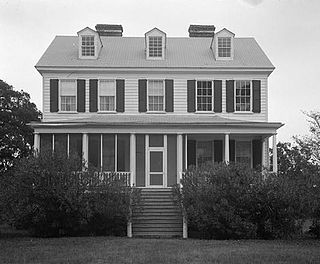
Cassina Point was built in 1847 for Carolina Lafayette Seabrook and her husband, James Hopkinson. Carolina Seabrook was the daughter of wealthy Edisto Island planter William Seabrook. William Seabrook had hosted the General Lafayette in 1825 at his nearby home at the time of Carolina's birth. Seabrook gave Lafayette the honor of naming the newborn child, and the general selected Carolina and Lafayette. When Carolina Seabrook married James Hopkinson, they built Cassina Point on the land given to them by William Seabrook.
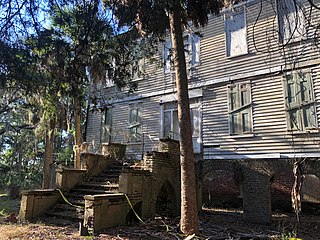
Peters Point Plantation is a historic structure located on Edisto Island, South Carolina. It was built by Isaac Jenkins Mikell in 1840 at the intersection of St. Pierre's Creek and Fishing Creek. It is located on the site General Lafayette used as a departure point from Edisto Island in 1826 during his southern tour.

The Wilkinson-Boineau House is a significant example of an early 19th-century Greek Revival residence with minor 20th-century alterations. William Wilkinson, a planter, established a village, Wilkinsonville, about 1830 that bears his name, and the house was the first one built. He lived for most of the year at his plantation on Swinton Creek.

Bailey's Store is one of the last nineteenth century commercial structures on Edisto Island, Charleston County, South Carolina. Bailey's Store was likely built earlier than 1825 on Edingsville Beach, a popular seaside resort, before it was moved to its present location about 1870 following the abandonment of Edingsville Beach. Because all of the remaining structures at Edingsville Beach were swept into the Atlantic Ocean in the hurricane of 1893, Bailey's Store is the only survivor of that community. The building was moved in two parts to Store Creek. It was reassembled there for use as a gin house already on that location. The building was listed in the National Register November 28, 1986.

The Isaac Jenkins Mikell House is an imposing Roman Revival residence in the style of a grand Italian villa that was built in 1853–1854 by Edisto Island cotton planter and enslaver. Isaac Jenkins Mikell for his wife, Mary Martha Pope. The house should not be confused with Peter's Point Plantation, an Edisto Island plantation built in about 1840 by Isaac Jenkins Mikell which is also sometimes referred to as the Isaac Jenkins Mikell House.
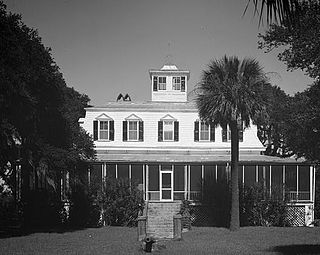
Sunnyside, also known as the Townsend Mikell House, is a historic plantation house located at Edisto Island, Charleston County, South Carolina. The main house was built about 1875, and is a 1+1⁄2-story, rectangular, frame, weatherboard-clad residence. It features a mansard roof topped by a cupola and one-story, hipped roof wraparound porch. Also on the property are the tabby foundation of a cotton gin; two small, rectangular, one-story, gable roof, weatherboard-clad outbuildings; a 1+1⁄2-story barn; and the Sunnyside Plantation Foreman's House. The Foreman's House is a two-story, weatherboard-clad, frame residence built about 1867.
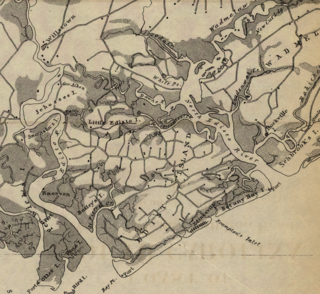
Edisto Island during the American Civil War was the location of a number of minor engagements and for a time of a large colony of escaped African-American slaves during the American Civil War (1861–1865). Edisto Island was largely abandoned by planters in November 1861 and in December 1861, escaped slaves began setting up their own refugee camps there. In January 1862, armed African Americans from the island and Confederate forces clashed and a Confederate raid in reprisal killed a small number of unarmed African Americans. In February, Union forces were stationed on the island to develop it as a staging area for future campaigns against Charleston, twenty-five miles away, as well as to protect the colony, which would eventually number thousands of African Americans. As Union forces took control of the island, a number of skirmishes occurred, but Confederates withdrew. In June, most of the Union troops left the island in a campaign, which culminated in the Battle of Secessionville. In July, the remaining troops withdrew, and the colony was removed to St. Helena Island. For the rest of the war, a small number of escaped slaves and plantation owners remained and farmed the island, but it was largely abandoned. Near the end of the war, the island was again used as a location of colonies of freed slaves.
Kardea Brown is an American chef and caterer known for being the host of the television show Delicious Miss Brown on the Food Network. The show has reached 3.5 million viewers since its 2019 premiere, averaging over 1 million viewers per episode, and began its sixth season in 2022.
























